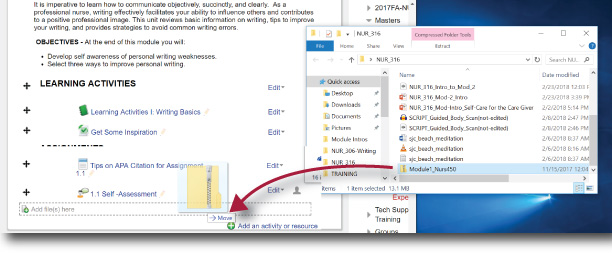Digital Accessibility: MS Word Lists & Emphasis (2)
Using List Styles
Any content that is organized as a list should be created using the list controls that are provided. There are usually one or more controls for adding lists. Using the available tools to create lists helps students using screen readers or assistive technologies understand how the content is organized. When a screen reader navigates a list, the screen reader informs the student that they’re on a list and informs them of how many items are in the list.
Common List Mistakes
A common mistake is to create your own “list” by typing in asterisks (*), dashes (-), or numbers before each line and pressing the tab key or space bar to move over. MS Word, depending on the version you use will attempt to create a list for you at this point. Not using the list tool to properly format a list can make content more difficult to navigate by users of assistive technology.
List Types
For our purposes there are two types of lists that might be included in a document or web page: numbered lists (also called ordered lists) and bulleted lists (known as unordered lists).Numbered lists show a hierarchy or steps in a process. Bulleted lists have no specific hierarchy.
List Instructions:
Recommended Option 1: Type the items in your list, pressing enter at the end of each row. Select all of the rows. Click the list icon. This video shows you how, plus options for editing your lists:Option 2: Place your cursor on the document where you want to begin a new list.
Click on the list icon.
Adding Emphasis
We've all used bold, underline, italics, or color to add emphasis. Some of us have even used multiple colors, bold, underlining, italics, and several combinations of these to convey meaning. Fight the urge to do this...it does not add to the understanding of the on-screen content. In fact, this increases cognitive load on our learners.In fact, a color blind or legally blind learner would not gain any insight based on these formatting combinations. Screen readers do not differentiate bold or underlined text.
There is a built-in way to add emphasis; it is called 'strong' or sometimes referred to as 'strong emphasis'. It is also in the Styles menu bar with Headings 1 through 6. As with headings you can adjust this to your preferred emphasis style if you really like italics which are bold.


